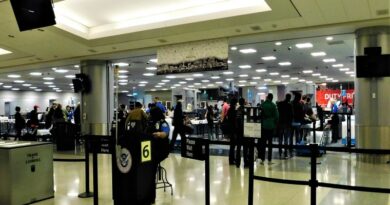Streamlining Immigration With AI: Custom Border Workflows That Boost Security and Reduce Delays
Border agencies can now adapt instantly to traveler surges or security threats with AI-powered custom workflows. These systems enhance security and reduce delays by automating tasks like biometric scans, allowing officers to focus on critical issues. This approach ensures compliance and speeds up processing, improving border efficiency.
What if border agencies could adapt their processes instantly to handle a sudden rush of travelers or a new security threat? In today’s fast-moving world, government border operations deal with constant changes. Agencies must balance tight security with quick processing to keep lines moving. Custom border control workflows powered by AI make this possible. They let teams create specific steps for screening, checks, and verifications that fit exact needs. This approach cuts delays and strengthens safety without rigid rules holding things back.
Why Do Government Agencies Need Custom Border Control Workflows?
Government border teams face rising traveler numbers and shifting risks every day. For instance, global travel has jumped 60% in the last decade, according to recent reports from the International Air Transport Association. Fixed systems often slow down when threats change or crowds build up. However, custom workflows allow agencies to set rules that match current situations. They automate tasks like biometric scans and document checks, so officers focus on real issues. Moreover, these workflows ensure teams follow laws from different countries while speeding up decisions. As a result, borders stay secure, and travelers move through faster.
How AI Improves Custom Border Control Workflows for Governments
AI brings innovative tools to border management. It spots patterns in traveler data that humans might miss. For example, algorithms can flag unusual travel routes or mismatched documents in seconds. Governments use this tech to build workflows that adjust automatically. If a high-alert situation arises, the system shifts to stricter checks without stopping everything. Additionally, AI reduces errors by handling routine verifications, which frees up staff for complex cases. In fact, studies from the World Customs Organization show that AI-driven systems cut processing times by up to 40%. Therefore, agencies gain better control over their operations.
Common Challenges in Implementing Custom Border Control Workflows
Integration poses a big hurdle for many government setups. Old systems often fail to connect with new tech, leading to data silos and delays. High costs also worry agencies, as custom solutions can demand big budgets for setup and training. Compliance adds another layer, with rules changing across borders and agencies. For instance, interoperability between immigration, customs, and law enforcement systems remains a pain point, causing miscommunications during joint operations. Furthermore, deployment can drag on for months if teams lack flexible tools. These issues slow down progress and raise risks in border security.
Real-World Examples of Successful Custom Workflows in Border Management
Look at how some countries have tackled these problems. In Europe, several nations adopted adaptable systems after the 2015 migrant crisis to handle influxes better. They created workflows that integrated real-time data from multiple sources, reducing wait times by 30%. Similarly, in the United States, agencies have used AI to automate watchlist checks, catching threats early without halting traffic. These cases show that tailored approaches work across air, land, and sea points. Consequently, governments see fewer bottlenecks and stronger coordination.
How M2SYS eGov Helps Governments Build Custom Border Control Workflows
Platforms like M2SYS eGov step in to solve these fundamental challenges. With over 20 years of experience working with governments worldwide and in the United States, M2SYS eGov builds and delivers solutions for border management. It addresses integration by connecting existing systems smoothly, so data flows between immigration, customs, and law enforcement without gaps. Costs drop because the platform allows quick deployments without heavy coding. For compliance, it ensures workflows meet national and international standards automatically. Plus, its adaptable design handles scalability for busy ports or quiet borders. Agencies and partners use it to create AI-powered workflows that detect anomalies and automate entries, boosting security while cutting delays.
Benefits of AI-Driven Custom Workflows for Border Security
Security gets a significant lift with these systems. They enable real-time monitoring, so threats like suspicious patterns trigger instant alerts. At the same time, efficiency improves as automation handles high volumes, letting officers focus on high-risk cases. Travelers benefit too, with shorter lines and smoother experiences. Interagency teamwork strengthens through shared data and consistent processes. Overall, this leads to borders that adapt to global changes without sacrificing safety or speed.
Adopting Custom Border Control Workflows in Government Operations
Moving to custom workflows starts with assessing current needs. Agencies should look at pain points like high costs or slow integrations. Then, they can partner with experienced providers to build solutions that fit. For example, starting small at one entry point often proves the value before full rollout. In the end, these steps lead to more responsive borders ready for tomorrow’s challenges.










